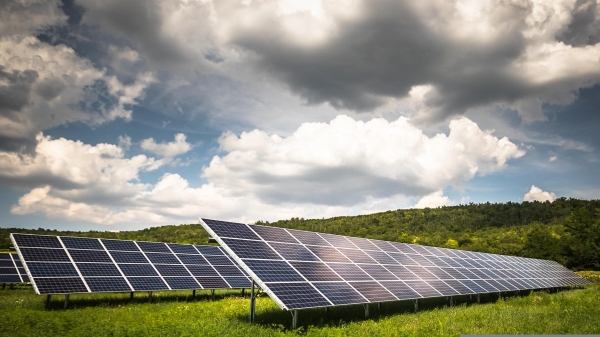From the ground, the new solar farm shimmers like a mirage oasis on a hot summer day. Instead of row after slanting row of shiny panels stretching taller than corn, this array, mounted directly on the earth, lies flat as water. From the air, it looks like an acre-sized swimming pool. Yet despite its modest stature, this new type of photovoltaic plant — one of five now producing a combined 2.5 megawatts of energy in California’s Central Valley — can match the output of conventional solar farms nearly three times its size.
In a meadow in southwestern Germany, solar panels stand upright in long, thin lines, like a series of fences. While farmers raise hay in the wide spaces between rows, the vertical power plant generates carbon-free electricity for the nearby town. Across the border in France, both wine and watts flow from panel-topped vineyards. Tea grows under solar panels in Japan, while pollinators are nurtured in the United States. And from Canada to Australia, utility-scale solar farms producing power for thousands of homes share their space with sheep.
These diverse approaches have the same goal — to help meet the burgeoning global demand for green energy by lightening the footprint of solar farms.
Read more at: Yale Environment 360
Photo Credit: Zsuzska321 via Pixabay


